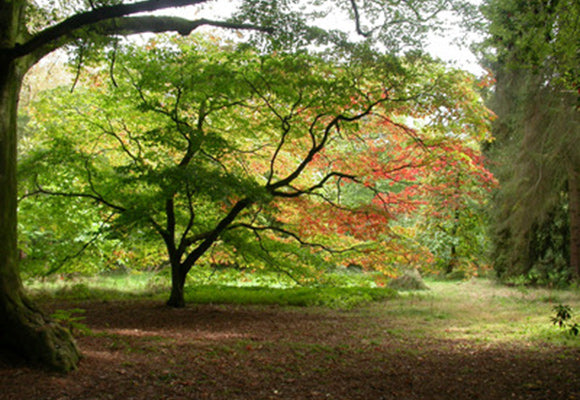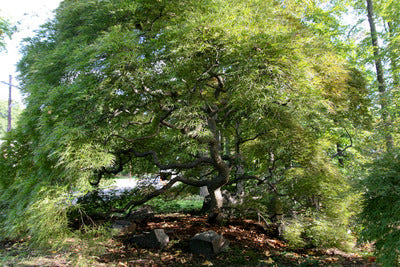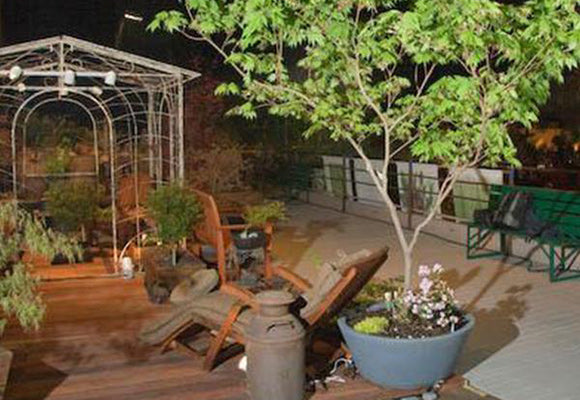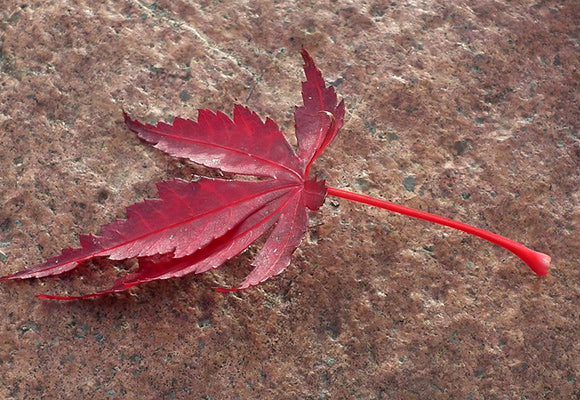Aesthetic Pruning of Japanese Maples

Why do we prune? A gifted pruner once told me we prune for our own needs; the tree knows exactly how to grow.
For the health of the tree in the garden we remove crossing branches and duplicating branches to create leaders for strong joints. A narrow crotch will collect debris which draws insects and disease. Crossing branches will rub against one another and cause wounds. Competing branches will suffer from lack of sunlight and eventually one will die back. Suckers and sprouts take strength from the tree. We want light and air movement through the tree for beauty and health.
For our needs we prune for the pragmatic as well as the aesthetic. Before pruning understand the nature of the tree. Is this tree vigorously growing or slow to grow? A vigorously growing tree will heal wounds more quickly and respond to cuts with redirected growth. Care should be taken with the less vigorous tree that wounds are sealed and fewer cuts are made at a time to protect against infection.

What is the nature of the tree? Is the form upright, wide-spreading, weeping or a dense bush form such as the witches brooms. We can ask a tree that will mature to a height of 18’ to stay at 12’ with reduction pruning. To ask the tree to be 8’ tall would be difficult. Selecting the right tree for the application is important.
Consider the application. What do you need from the tree? Is there a sidewalk close by or an eave? Do you want to see through the tree from a window? Do want open space for underplantings?
Always begin with a vision. When we prune we are directing the energy of the tree. Here at the nursery we evaluate the structure of the tree each time we pot up. My mother would say, “It’s better to rub off a bud than cut a branch”. A larger project may take several years to complete. Never remove more than a third of the tree in a year.
When to prune. Small cuts, under ¼ inch, can be made at any time. For larger cuts it is best to prune in January, February or March depending on your climate. You want to prune a few weeks prior to emergence as the energy of the tree is coming up to heal the wounds. We also prune in July and August although it is more difficult to see the structure of the tree in leaf and care should be taken not to expose bark to the scalding of hot sun when removing branches.


Technique
Reduction pruning- to maintain or reduce the size of a tree we cut back strong branches to a smaller branch.
Directional pruning- telling the tree where to go, directing the growth. Removing branches moving in an undesirable direction.
Open form and layered branching- light for color and definition of detail, layers for a beautiful and graceful form. Removing branches to create open space.
Terminology
Crotch- where a new branch connects to the parent branch.
Collar- The point at which the branch is defined as separate and the healing takes place.
Internode- the space between nodes
Leader- The strong leading branch at the top
Terminal bud- The buds at the end of the branch
Alternating Lateral buds- buds form in pairs across from one another on alternate sides at each internode.
Pruning is an exercise of relationship. We ask the tree within its nature to adapt to our needs. We in turn provide all that is needed for the tree to thrive in the environment we ask it to grow.
These are some very basic principles of pruning Japanese Maples. I am a student with much to learn from the trees. Yuki Nara is a gifted pruner and teacher. I am very grateful for her help and her work. You can learn more about pruning Japanese Maples from her website; www.WayofMaple.com
For more information on Pruning Japanese Maples see our videos:
Aesthetic Pruning of Japanese Maples (part 1)
Aesthetic Pruning of Japanese Maples (part 2) Root Pruning of Japanese MaplesAlso in Essence Of The Tree Articles

Planting Directions for Containers

How We Ship



Patricia Smyth
Author